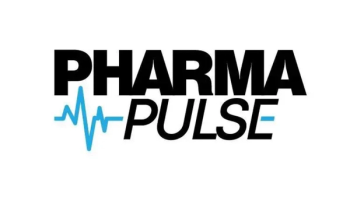
What Is Smart Pharma Packaging?
In the first part of her Pharma Commerce video interview, Kirsten Newquist, Identiv’s CEO, defines the term, and explains how it is helping to combat the growing threat of counterfeit drugs in today’s global supply chain.
In a video interview with Pharma Commerce, Kirsten Newquist, Identiv’s CEO, defines "smart pharma packaging" as the integration of technology into pharmaceutical packaging to enhance product identification, tracking, and patient engagement. She explains that packaging primarily involves embedding technologies such as RFID radio-frequency identification (RFID) or Bluetooth low energy (BLE) into pharmaceutical containers. These technologies assign a unique digital ID to each package, enabling serialization, which is critical for tracking and traceability across the global supply chain.
This digital ID allows stakeholders—from manufacturers to pharmacists and patients—to verify a drug’s authenticity at every step of its journey. This significantly reduces the risk of counterfeit drugs entering the system, as products can be authenticated upon delivery or administration. Newquist emphasizes that this kind of smart packaging not only strengthens supply chain security but also fosters better patient engagement, offering real-time data that can support dosage verification and proper usage.
Additionally, she notes a secondary dimension of smart packaging: smart drug delivery systems. These include technologically enhanced devices like auto-injectors, smart pillboxes, or connected syringes, which offer further layers of verification and ensure patients receive the correct medication and dosage. While this may go beyond traditional packaging, it aligns with the broader goals of improving safety, compliance, and confidence in the pharmaceutical supply chain.
Overall, smart pharma packaging plays a crucial role in combating drug counterfeiting by improving transparency and traceability from production to patient use. By embedding intelligence into packaging and delivery systems, the pharmaceutical industry is better equipped to protect product integrity and ensure patient safety in an increasingly complex global supply chain.
Newquist also comments on the role embedded product intelligence plays in maintaining cold chain integrity, and why is this so critical for pharmaceutical safety and efficacy; how regulatory mandates, such as the Drug Supply Chain Security Act (DSCSA), influence the adoption of smarter packaging technologies across the industry; some of the biggest challenges pharmaceutical companies face in implementing this infrastructure, and much more.
A transcript of her conversation with PC can be found below.
PC: How would you define “smart pharma packaging,” and how is it helping to combat the growing threat of counterfeit drugs in today’s global supply chain?
Newquist: In my mind, what that really means is the integration of intelligence or technology into the packaging—in this case, putting an identification on the smart packaging. In the case of radio-frequency identification (RFID) or Bluetooth low energy (BLE) technology—which is a type of technology that my company develops—it's really giving everything a unique digital ID. It enables serialization of the product, which helps with tracking of the product through the supply chain. It helps with enabling traceability. It helps with engagement, once the patient or the pharmacist actually receives the product. It's really about adding this technology and intelligence to the packaging that's used for the pharmaceutical. That’s my primary definition.
There's a secondary one as well, where there's also smart drug delivery packaging. Maybe that goes beyond what your question is, but there is also technology that can be embedded into drug delivery devices, like syringes, auto injectors, or pill boxes that also enable patients to be ensured that they've got the right drug, that they've got the right dose, etc.
First and foremost, it's around true pharmaceutical packaging. Then secondly, I think there's also this pharmaceutical packaging concept that's really more around drug delivery, and in both cases, it really does help with counterfeiting, because it enables you to track the drug through the supply chain and trace it through the supply chain, but also when it gets to the patient or the pharmacist, doctor, or whoever is delivering the drug, they can verify that it is the actual drug, that it is not counterfeit. They can authenticate it and really make sure that it's not a counterfeit drug.
Newsletter
Stay ahead in the life sciences industry with Pharmaceutical Commerce, the latest news, trends, and strategies in drug distribution, commercialization, and market access.





